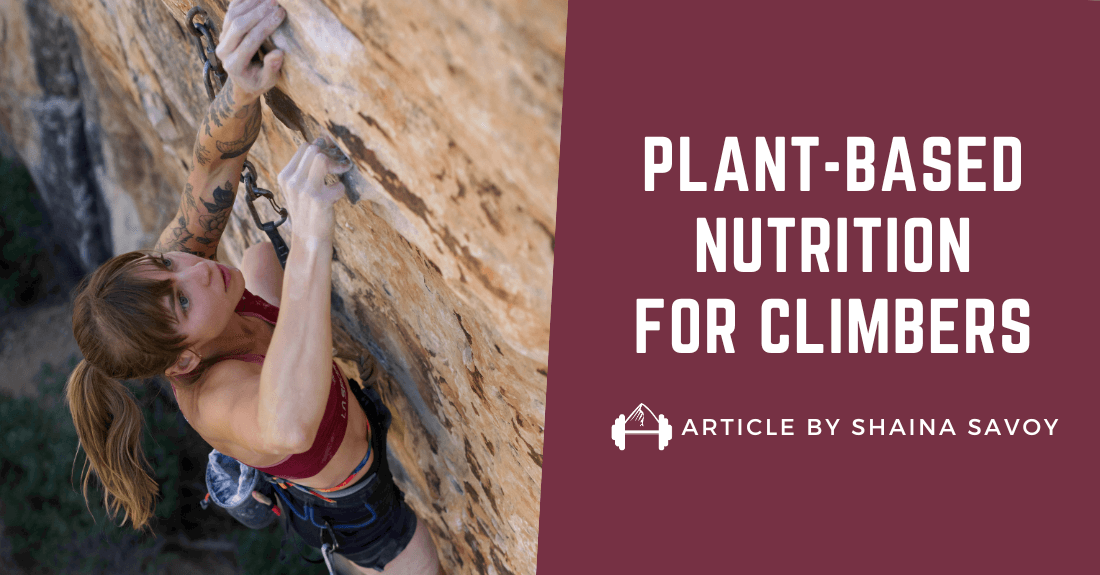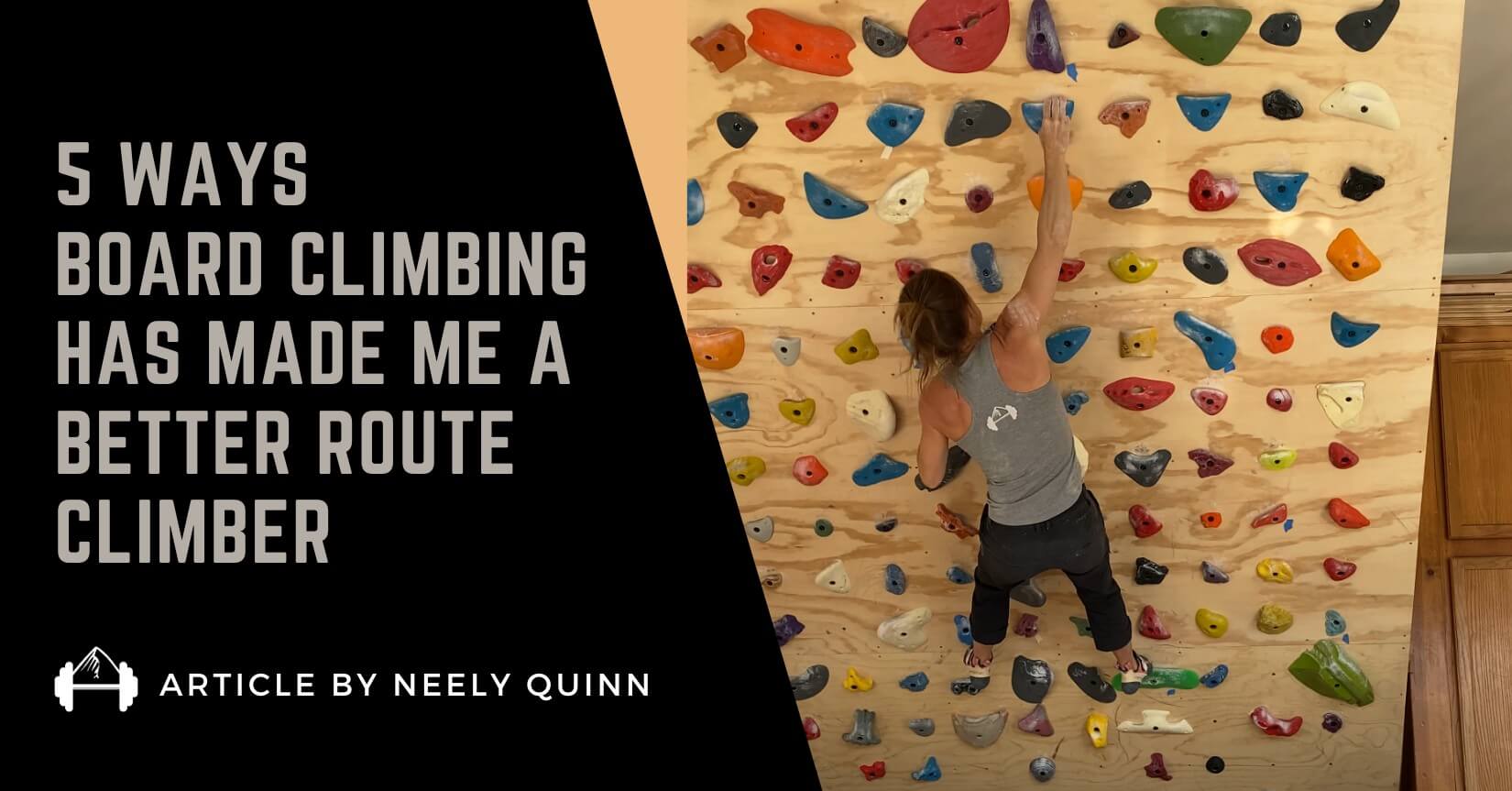We all love doing weighted pull-ups, hangboarding, and various strength training exercises, but how often are you considering your technique?
Today, we have the first installment of an article series written by UK based climber, coach, and author John Kettle. John was on the TrainingBeta Podcast where he talked about how improving his movement skills helped him break a decade-long plateau and improved his climbing from the V7 and 5.11d level to V11 and 5.13b.
This article is part one of three. In the series, John outlines three technique habits that may be hindering your performance, how to identify them, and how to address them through specific exercises.
In this first installment, John discusses top heavy tension. He describes how this habit may arise in the first place, what it looks like, and the symptoms that can help you identify whether this is something you do yourself. At the end, he gives you several exercises and drills you can add to your training routine that will help you address it.
Give it a read and stay tuned for the others!
If you like what you see here, be sure to check out John’s book Rock Climbing Technique where he outlines in detail all of the drills and methods of technique practice he uses, both in his own training and with the climbers he coaches.

Three Technique Habits that Undermine Your Performance: Find and Fix Them
By John Kettle
Part 1
Everyone has an individual climbing style, a ‘movement fingerprint’ born from the unique combination of body structure and life experiences that they bring to their rock climbing. Within the huge variety of personal climbing styles, certain movement themes emerge consistently in the elite performers, all expressed in subtly different ways depending on the athlete, and the terrain they are climbing.
Likewise, outside these common threads of excellence, there is a range of technique habits that are almost never seen amongst elite performers, but can be seen frequently amongst us mortals at the crags, boulders, and gyms. In this article I’ll outline three of those I see most frequently, and how to deal with them. They are movement styles and techniques that if relied on excessively, significantly inhibit our performance in many climbing situations and frequently lead to increased injury risk.
Don’t take these three techniques as bad things to ever find yourself doing. Climbing is so complex and varied that there is almost always an appropriate time where these will justifiably save your ass and secure your success. The problem comes when they become habitual movements, showing up consistently indoors and out on all kinds of climbing, as if they’re a dominant part of your personal climbing fingerprint.
For each technique in this three-part series I have split it into three sections to make the diagnosis and improvement process easier:
- Symptoms – the telltale signs to look for, that suggest this habit is one of yours
- Reasons – for those that like to know why they may have these unhelpful habits
- Solutions – The fix; how to practice in order to rebalance your skills with a combination of tactics and drills to practice at the wall and on the rock.
1: Top Heavy Tension
Symptoms
We’re talking excess muscle tension spread across the arms, shoulders, neck, and upper back. Overly tight muscles are stiff rather than mobile, unable to produce much power, and lead to movement that is jerky rather than fluid. In the days after climbing, someone carrying top-heavy tension can frequently experience achiness in the neck, trapezius and shoulders.

The author wrestling with arm and shoulder tension on Little Hitler, V8
What does it look like? On slabs and vertical walls you’ll often see these climbers on tip toe with bent arms, shoulders hunched up by their ears. On overhanging terrain there can be frequent cut-looses when hands move, regular deep lock-offs, and feet drifting up off the footholds while stationary or checking handholds. The top heavy climbing style tends to involve a repeating pattern of high steps and hard pulls, with rarely move than one foot move for each hand move.
The short term cost is in the arms and shoulders, which are overworking all the time. You’ll need to be significantly stronger and fitter at a given grade to make it work with this style – not a great use of hard-won fitness. More concerning is the potential long term cost: Increased stress on your upper body can lead to nerve and tendon issues emerging at the shoulders, elbows, wrists and fingers as they are overworking in place of core, hips and lower body.
Reasons
High strength at the start of your climbing career can commonly encourage this style to develop – it’s often seen amongst strong novices. A preference for focusing on the hands rather than hips or feet can also bring about this movement style, but most common is an underlying anxiety about falling or failing on the climb.
We often seek psychological security from our hand-holds (hence the ‘Thank-God Jug’) and as a consequence when stressed we find ourselves squeezing holds a bit harder, and focusing heavily on the hands to bring reassurance to our strung-out mind. The hidden cost is that this pulling and squeezing is very tiring for the small muscles of our forearms and shoulders, and physically draws us up away from our footholds.

As a result our feet and core carry less of our weight, and our quality of balance suffers too, leaving the arms to pay the price. Despite our legs being really well built to bear our bodyweight through our feet, I never hear of Thank God footholds..
Solutions
If this sounds familiar, what can you do about it? Firstly check in with your awareness next time you’re climbing to see if your movement style features any of my top heavy tension symptoms. Then try out these movement drills and see how they feel:
1. Giraffe neck: This is a postural exercise, and can be done on any terrain where you’ve got enough headspace to think about it as you climb, all the way up to steep bouldering boards.
- Imagine clipping the autobelay onto the crown of your head (that’s the back part of the top of your skull). It would stretch you upward starting from your tailbone, extending your spine all the way up, pulling your tummy in, lifting your sternum slightly and tilting your chin in as all the spinal muscles relax and the spine lengthens. This is the ‘Giraffe neck’ posture to explore whilst you climb a series of easy to moderate difficulty routes or problems. Notice how it affects your shoulders, your breathing and the weight on your feet. Try in on individual hard moves too.
2. Tail Tuck: Tuning in to tension and positioning at your pelvis can give permission for your upper half to calm down and chill out a bit. Best practiced on easy climbing terrain where you can tune in to quite subtle feedback from your core.

Before climbing, stand with your hands on hips and picture your pelvis as a large bowl between your hands. Tilt the bowl to the front and then to the back, as if pouring water out of it, to get a feel for the range of pelvic tilt you currently have, and where a neutral relaxed hip position is for you – it’s not always when the bowl is level. Tilt it back again, just a fraction beyond its rest position, so that your tailbone is slightly tucked under you. You may feel your glutes and other posterior muscles engage to hold this position.
- Climb easy boulder problems or routes maintaining this ‘tail tucked’ position. Notice how the tucked position can fire up the hamstrings, glutes and calves to pull more on steep terrain, and allow the upper body to relax, breathe more easily and maintain softer shoulders and arms. Practice until you have a good feel for the difference it makes, and if you are a route climber compare some specific resting positions – heel hooks are a good one to start with.

Focused on a heavy left foot for the precarious top moves of Theology V4
3. Heavy Feet: This final drill is an exercise is redirecting attention from your upper body to your feet, and relaxing heavily wherever possible. Once you are on big footholds on angles steeper than about 15 degrees overhanging, the heavy foot changes slightly from a limb being pushed down by gravity, to a pulling, clawing foot drawing you in to the rock. That’s almost a separate skill (and another article!), so to keep things simple this is best learnt on slabby, vertical or very slightly overhanging terrain. It works very well on the smallest of footholds too:
- Imagine you had the power to lower your centre of gravity at will. Dial it down from bellybutton to the floor between your feet. You’ll have to seriously relax your whole upper body and sink into your heels to achieve this [imaginary] feat. Now try some climbing, feeling the immense pressure each foot applies to the holds as soon as it makes contact. Ensure the pressure stays high until the moment the foot leaves a hold, and then instantly returns on the next one. During each foot move, you’ll feel the pressure increase temporarily on the stationary foot. This pressure will also be dropping your heels deeply down into calve-stretching territory. Right up to the point where you fear your heel is so low, the foot will pop right off the foothold. It might even do that, if it wasn’t for the immense pressure holding it on!
Climbing like this is a great way to master committing to the tiniest footholds, and making the most of poor rests in vertical or slabby terrain. I frequently do my low intensity, high volume sessions with time dedicated to specifically to this skill.
‘light from sternum up, strong from hips down’
From practicing and experimenting with these three exercises, the style you are aiming to master is ‘light from sternum up, strong from hips down’. For some climbers with a high degree of body awareness, just thinking about this and experimenting with it while climbing will be enough to begin the shift to an improved style. For others, more purposeful practice of these three drills on easy climbing will be required.
In the second part of the series, we’ll zoom in on the role our legs play in climbing, and look for opportunities to take some of that top heavy tension down to where it can help us be more powerful and efficient.

About the Author

John Kettle is a long-time climber, a full-time climbing coach and an instructor for aspiring climbing coaches in the UK. He also recently wrote a book called Rock Climbing Technique, and you can find more about him on his website at www.johnkettle.com. He lives in the English Lake District, where he does most of his climbing and teaching.




Leave A Comment